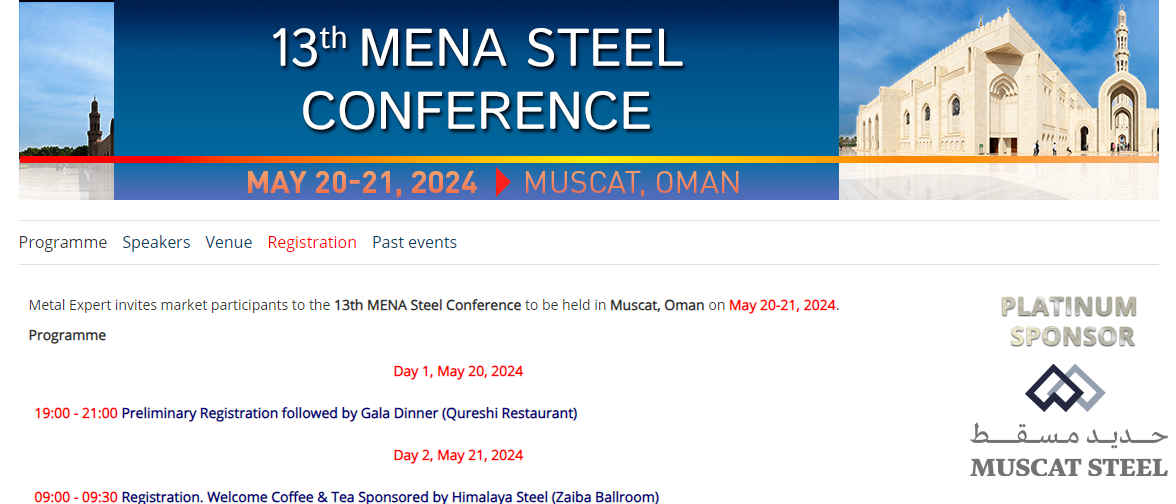Public construction projects boost steel demand, with a 3% increase in steel consumption anticipated for 2025.
Despite geopolitical tensions and the global economic downturn, steel consumption in the MENA region is expected to rise due to increased demand from expanding projects in the region.
At the '2024 MENA Steel Conference' held in Muscat, Oman, on May 20-21, panelists highlighted that "despite global economic and geopolitical challenges, the MENA region maintains an attractive position in the steel market thanks to a robust consumption outlook centered on the construction industry."
According to presentations at the conference, steel consumption in the MENA region decreased by 2.2% year-on-year to 69.3 million tons in 2023 due to geopolitical conflicts such as the Israeli-Palestinian war and regional economic downturns.
However, with ongoing public construction projects, including new city construction, SOC expansion, and energy transitions, steel consumption in 2024 is expected to increase by 4.7% year-on-year to 72.6 million tons. In 2025, steel consumption is projected to grow by 3% year-on-year to 74.8 million tons.
Particularly in the GCC countries, steel consumption is expected to grow steadily due to active construction projects, relatively stable geopolitical environments, fiscal stability, and business-friendly policies.
As of 2023, the per capita steel consumption in GCC countries was 300 kg per year, similar to advanced countries like Europe and the USA. Unlike advanced countries, which have a high proportion of sheet metal, the construction steel ratio is extremely high at 90%. The demand for rebar and steel sections in the GCC reached 16.5 million tons in 2023, a 9.2% increase from the previous year.
In addition to the GCC countries, Egypt is seeing increased steel consumption driven by new city projects, and Iran is also increasing steel consumption despite conflicts with Israel, bolstered by economic cooperation with Russia and China.
Maghreb countries such as Algeria, Morocco, and Tunisia are also seeing rising steel demand through energy transitions, SOC expansion, and manufacturing growth projects.
While the outlook for steel demand in the MENA region is very positive, there are several potential risks that could slow down consumption unexpectedly.
Key risks to the MENA steel industry identified at the conference include falling oil prices, increased exports from China, geopolitical conflicts, and currency instability.
If oil prices fall below $100 per barrel, public construction projects in the region could be delayed due to deteriorating fiscal conditions. Increased exports of low-priced steel products from China could shrink production in the region. Geopolitical tensions between Israel and Palestine, and Israel and Iran, could disrupt regional industrial supply chains and logistics, adversely affecting both the MENA region and its major export market, the EU. Lastly, fluctuations in the value of the US dollar could negatively impact the dollar-linked banking system in the MENA region.
The conference secretariat noted, "The MENA steel market is expected to show promising growth prospects in 2024 due to strong construction demand and robust financial support and economic policies from regional countries. However, it is crucial to closely monitor potential risks related to oil prices, geopolitical factors, and currency volatility to ensure continued stable growth in steel demand."
Tags
STEEL


